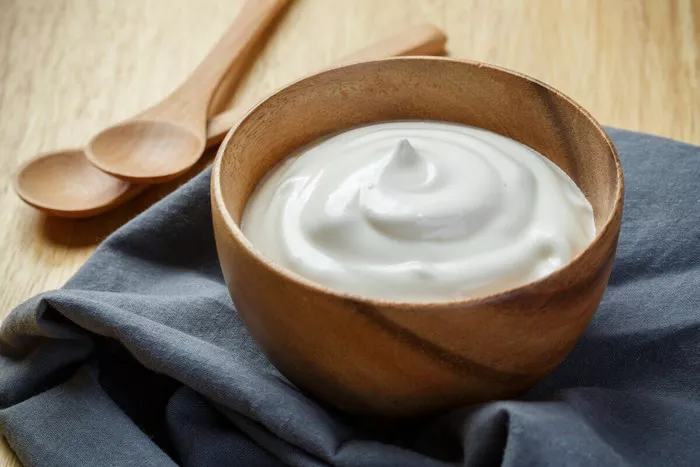For individuals with diabetes, managing blood sugar levels is a crucial aspect of daily life. This often means careful monitoring of carbohydrate intake and making informed dietary choices. Ice cream, a beloved treat for many, can pose a challenge for diabetics due to its typically high sugar content. However, with advancements in food science and increased awareness about diabetes-friendly options, enjoying ice cream doesn’t have to be off-limits. This article explores the best ice cream options for diabetics, focusing on nutritional content, ingredients to watch out for, and tips for making smart choices.
Understanding Diabetes and Dietary Considerations
Before delving into the specifics of ice cream, it’s essential to understand how diabetes affects dietary choices. Diabetes is a chronic condition that affects the way the body processes blood sugar (glucose). There are two main types of diabetes: Type 1 and Type 2. Type 1 diabetes is an autoimmune condition where the body attacks insulin-producing cells in the pancreas, while Type 2 diabetes is characterized by insulin resistance and is often related to lifestyle factors.
For both types, maintaining stable blood sugar levels is critical. This involves a balanced diet that controls carbohydrate intake, which directly impacts blood sugar levels. Carbohydrates in foods are broken down into glucose, which enters the bloodstream and raises blood sugar levels. Therefore, managing carbohydrate intake is a key strategy for diabetics to avoid spikes in blood sugar.
Ice Cream and Blood Sugar
Traditional ice cream is typically high in sugar and fat, making it a potential problem for diabetics. The high sugar content can lead to rapid spikes in blood sugar levels, while the fat content can slow down the digestion process, causing prolonged high blood sugar levels. However, not all ice creams are created equal, and there are several options on the market that cater to those looking to manage their carbohydrate intake without sacrificing flavor.
Choosing the Best Ice Cream for Diabetics
Low-Glycemic Index Ice Creams
The glycemic index (GI) is a ranking of how quickly foods cause a rise in blood sugar levels. Foods with a low GI are digested and absorbed more slowly, leading to a gradual rise in blood sugar. Diabetics should look for ice cream with a low GI to help maintain stable blood sugar levels. Many brands now offer ice cream options specifically formulated to have a lower GI by using sugar substitutes and lower carbohydrate content.
Sugar-Free Ice Creams
Sugar-free ice creams use sugar substitutes to provide sweetness without the same impact on blood sugar levels as regular sugar. Common sugar substitutes include:
Stevia: A natural sweetener derived from the leaves of the Stevia plant. It has no calories and does not raise blood sugar levels.
Erythritol: A sugar alcohol that has a low impact on blood sugar and insulin levels.
Xylitol: Another sugar alcohol that has a minimal effect on blood sugar but should be consumed in moderation due to its laxative effect in large quantities.
Sucralose: An artificial sweetener that is not metabolized by the body, making it calorie-free and blood sugar neutral.
When choosing sugar-free ice creams, it’s important to check the ingredient list for these sugar substitutes and ensure there are no added sugars or high-glycemic fillers.
Low-Carb and Keto Ice Creams
Low-carb and keto diets have gained popularity for their potential benefits in managing diabetes. These diets focus on reducing carbohydrate intake and increasing fat consumption to promote ketosis, a metabolic state where the body burns fat for energy instead of carbohydrates. Many ice cream brands now offer low-carb and keto-friendly options that use ingredients like almond milk, coconut milk, or heavy cream combined with sugar substitutes to create a satisfying treat that won’t spike blood sugar levels.
High-Protein Ice Creams
High-protein ice creams are another excellent option for diabetics. Protein has a minimal impact on blood sugar levels and can help promote satiety, reducing the likelihood of overeating. These ice creams often use whey protein or casein protein to boost their protein content while keeping carbohydrates and sugar low. Additionally, the higher protein content can help stabilize blood sugar levels by slowing the absorption of carbohydrates.
Portion Control and Mindful Eating
Even with healthier ice cream options, portion control is crucial. It’s easy to overindulge in ice cream, leading to an excessive intake of calories and carbohydrates. Diabetics should pay attention to serving sizes and consider pre-portioned options to avoid overconsumption. Mindful eating practices, such as savoring each bite and eating slowly, can also help enhance the experience and prevent overeating.
Top Brands and Options
Several brands have recognized the demand for diabetes-friendly ice cream options and have developed products that cater to this market. Here are some top brands and options to consider:
Halo Top
Halo Top is a popular brand known for its low-calorie, high-protein ice creams. They offer a wide range of flavors, all of which are sweetened with erythritol and stevia, making them a suitable option for diabetics. Each pint typically contains around 20 grams of protein and 5 grams of sugar, with a total carbohydrate content of about 15-20 grams per serving.
Enlightened
Enlightened offers a variety of ice creams that are low in sugar and high in protein. They use a combination of sugar substitutes, including erythritol and monk fruit, to create delicious flavors without the high sugar content. Their ice creams are also lower in fat, making them a balanced choice for diabetics.
Breyers CarbSmart
Breyers CarbSmart is a line of ice creams specifically designed for low-carb diets. These ice creams are sweetened with sugar alcohols and have a significantly reduced carbohydrate content compared to traditional ice creams. They offer classic flavors like vanilla, chocolate, and mint chip, allowing diabetics to enjoy familiar tastes without the guilt.
Rebel Creamery
Rebel Creamery is a brand that focuses on keto-friendly ice creams. Their products are high in fat and low in carbohydrates, using ingredients like cream and egg yolks combined with erythritol and monk fruit sweetener. Rebel ice creams are rich and creamy, providing a satisfying dessert option for those following a low-carb or ketogenic diet.
Arctic Zero
Arctic Zero offers a range of light ice creams that are low in calories and sugar. They use natural sweeteners like organic cane sugar and monk fruit to create flavors that are both tasty and diabetes-friendly. Their ice creams are also lactose-free and gluten-free, making them suitable for individuals with dietary restrictions.
Homemade Ice Cream for Diabetics
Making homemade ice cream can be a great way to control the ingredients and tailor the treat to your specific dietary needs. Here’s a simple recipe for a diabetes-friendly vanilla ice cream:
Ingredients:
- 2 cups unsweetened almond milk or coconut milk
- 1 cup heavy cream (optional for a creamier texture)
- 1/2 cup erythritol or stevia (adjust to taste)
- 1 teaspoon vanilla extract
- A pinch of salt
Instructions:
In a medium saucepan, combine the almond milk (or coconut milk), heavy cream (if using), erythritol (or stevia), vanilla extract, and salt. Heat over medium-low heat, stirring frequently, until the sweetener is fully dissolved.
Remove the mixture from the heat and let it cool to room temperature.
Pour the mixture into an ice cream maker and churn according to the manufacturer’s instructions until it reaches a soft-serve consistency.
Transfer the ice cream to a lidded container and freeze for at least 2 hours to firm up.
Scoop and enjoy your homemade diabetes-friendly vanilla ice cream!
Tips for Enjoying Ice Cream as a Diabetic
Read Labels Carefully
Always check the nutrition labels on ice cream packaging to understand the carbohydrate and sugar content. Look for options with lower total carbohydrates and sugars, and be mindful of serving sizes.
Consider the Ingredients
Choose ice creams made with natural sweeteners like stevia, erythritol, or monk fruit. Avoid options with added sugars, high-fructose corn syrup, or artificial additives that can negatively impact blood sugar levels.
Balance Your Meal
If you plan to enjoy ice cream, try to balance it with a meal that includes protein, healthy fats, and fiber. This can help slow down the absorption of carbohydrates and minimize blood sugar spikes.
Monitor Blood Sugar Levels
After eating ice cream, monitor your blood sugar levels to see how your body responds. This can help you make informed decisions about portion sizes and the best times to enjoy this treat.
Experiment with Recipes
Don’t be afraid to experiment with homemade ice cream recipes. This allows you to control the ingredients and tailor the flavors to your preferences while ensuring they fit within your dietary guidelines.
See also: Does the Keto Diet Help with Prediabetes?
Conclusion
Diabetes management requires careful attention to diet, but it doesn’t mean you have to give up on enjoying ice cream. With the right choices and a mindful approach, diabetics can indulge in this sweet treat without compromising their health. Opt for low-glycemic, sugar-free, low-carb, or high-protein ice creams, and consider making your own at home for ultimate control over the ingredients. By making informed decisions and practicing portion control, you can satisfy your sweet tooth while keeping your blood sugar levels in check.


























